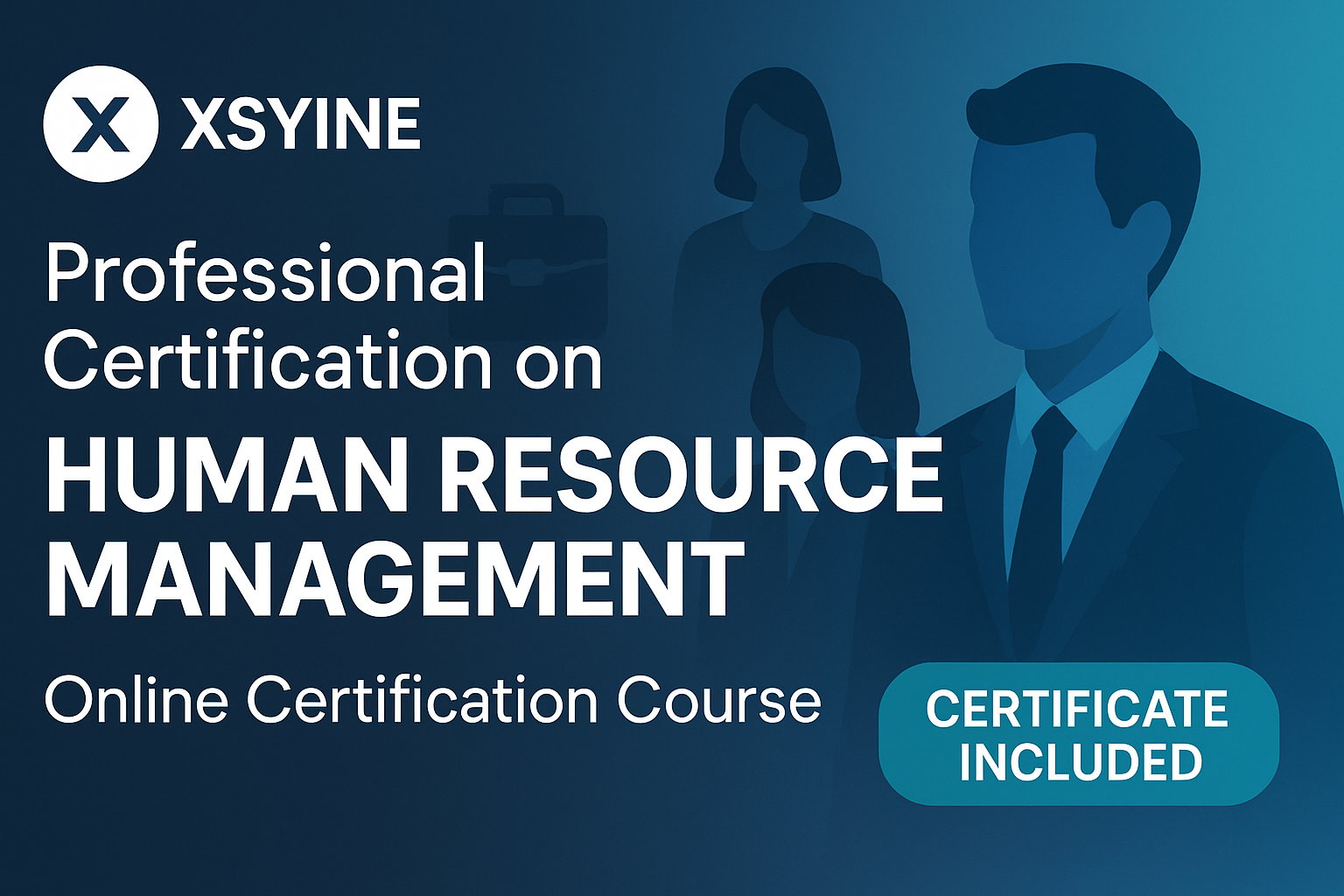Professional Certification on Human Resource Management

About Course
The Professional Certification on Human Resource Management is a comprehensive online program designed for individuals who aspire to build or advance their careers in Human Resources. This course provides an in-depth understanding of HR principles, practices, and strategies that are essential for managing people effectively in modern organizations.
It covers everything from recruitment and selection to employee engagement, performance management, legal compliance, compensation, learning & development, HR analytics, and the role of HR in business growth. The curriculum is designed to blend theoretical knowledge with practical applications, making learners job-ready for HR roles in any industry.
By the end of the course, learners will not only master the core concepts of HR but also gain exposure to current trends like HR digital transformation, diversity & inclusion, and HR analytics—skills highly in demand by Indian and global companies.
Course Content
Module 1: Introduction to Human Resource Management
-
1.1 What Is HRM? Evolution, Scope, and Importance
-
1.2 HRM vs Personnel Management (and Industrial Relations)
-
1.3 Roles of HR in Modern Organizations (Ulrich+ expanded)
-
1.4 Ethical Foundations & Indian Legal Context (executive overview)
-
1.5 HR Strategy & Operating Alignment
-
1.6 Employee Lifecycle (ELC) Deep Dive
-
1.7 Performance & Motivation (practical synthesis)
-
1.8 Rewards & Benefits (total rewards logic)
-
1.9 Employee Relations, Safety & Well-being
-
1.10 Diversity, Equity & Inclusion (DEI) and Culture
-
1.11 Digital HR & Analytics (starter toolkit)
-
1.12 Mini Case Studies (India-focused)
-
1.13 Templates & Checklists (ready to adapt)
-
1.14 Common Pitfalls & How to Avoid Them
-
1.15 Capstone: Building Your HRM Maturity Roadmap (12 months)
-
1.16 Key Takeaways
-
1.17 Review & Reflection
-
1.18 Further Reading (curated, concept-level)